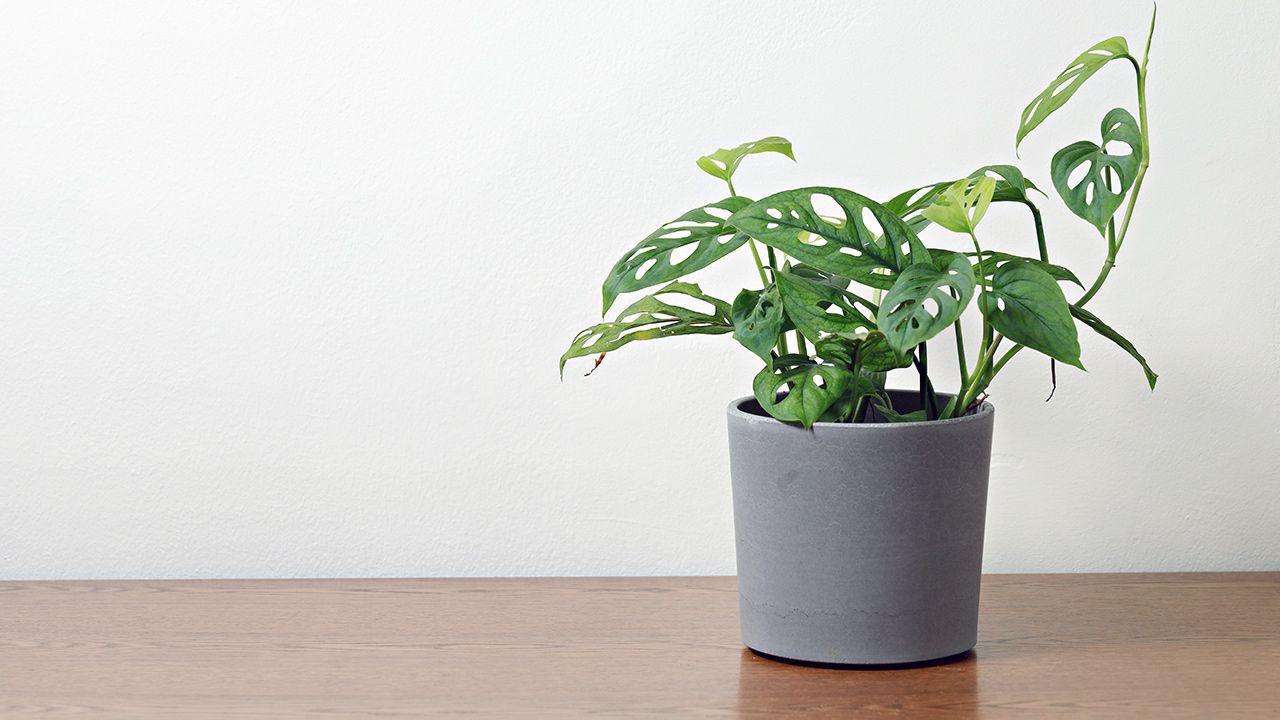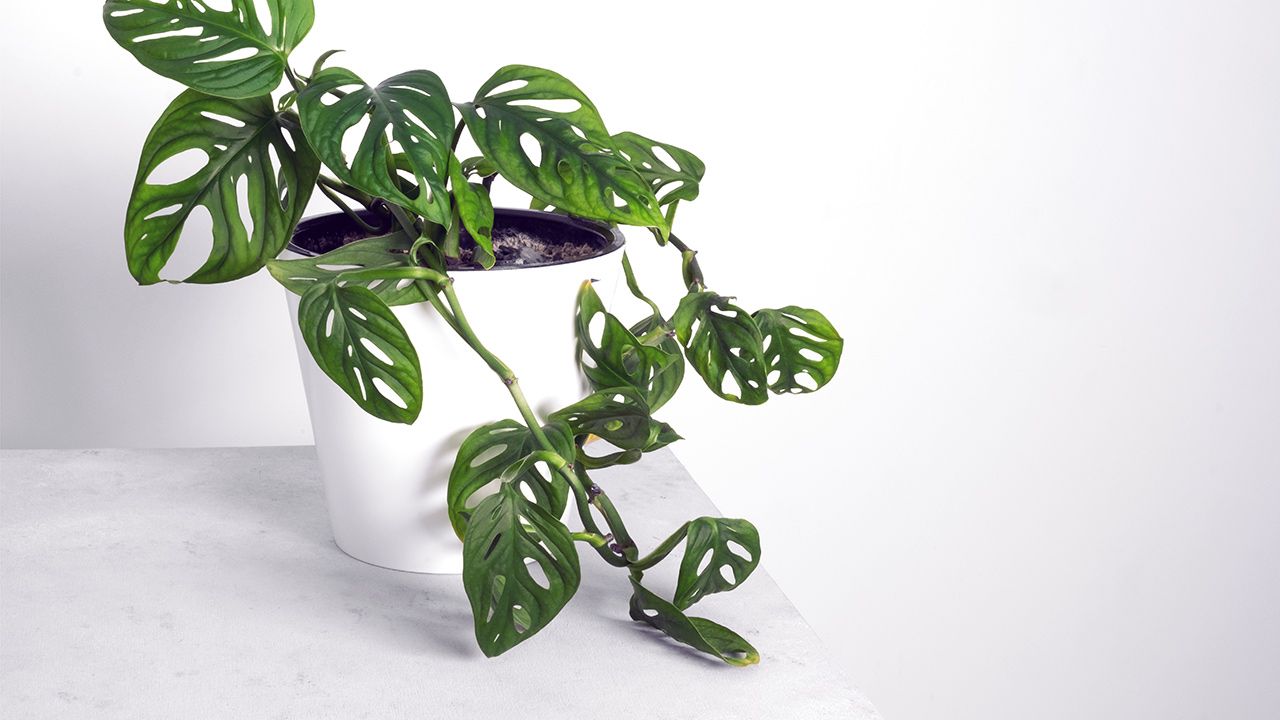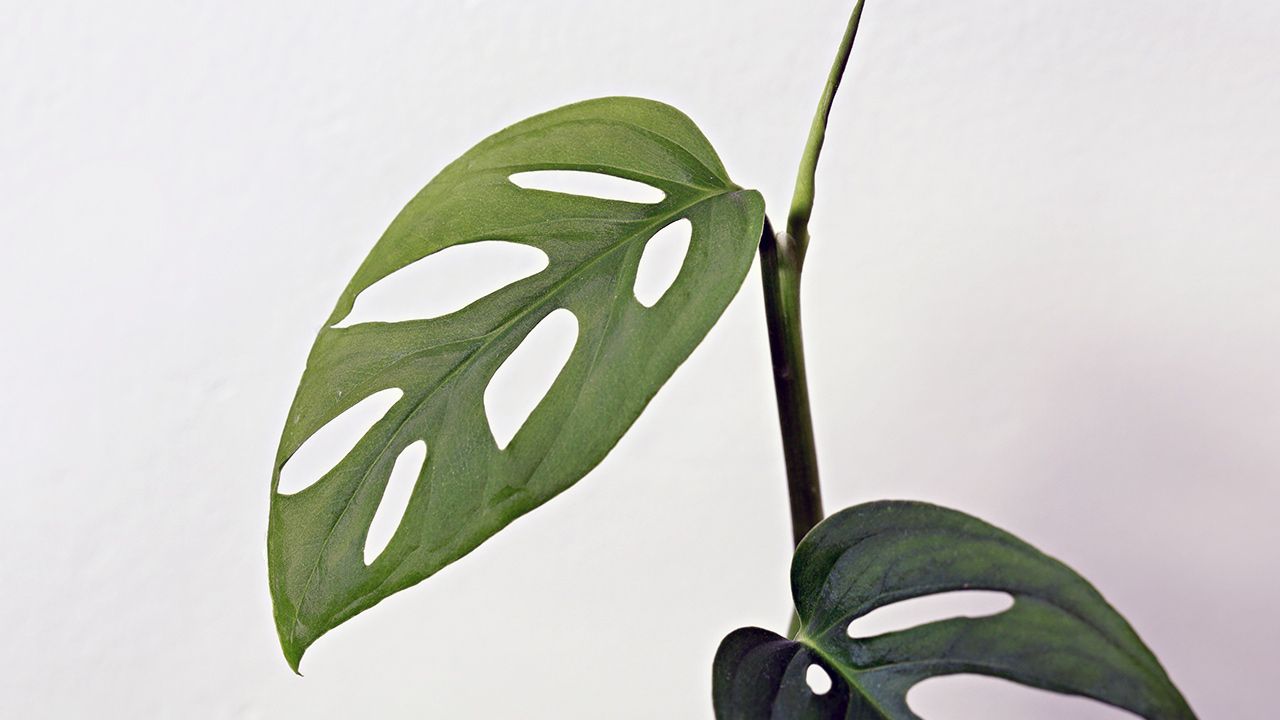Swiss Cheese Plant Care: Mastering Growth & Direct Sunlight
By HeyHome • October 6, 2023

At a Glance: Monstera Adansonii
- Common Names: Swiss Cheese Plant, Swiss Cheese Vine, Five Holes Plant
- Botanical Name: Monstera Adansonii
- Family: Araceae
- Plant Classification: Perennial
- Typical Size: 10–13 ft. tall outdoors, 3–8 ft. tall indoors, 1–3 ft. wide
- Preferred Sunlight: Partial
- Soil Preference: Moist, well-drained
- Soil pH: Acidic to Neutral
- Blooming Season: Spring (although it doesn't bloom indoors)
- Flower Color: White
- Hardiness Zones: 10–12 (USDA)
- Origin: Central and South America
- Toxicity: Toxic to pets
Dive into the captivating realm of the Swiss Cheese Plant. It's not just another houseplant; it's a statement. One glimpse at its famed heart-shaped leaves, adorned with intricate patterns and holes, reveals its global admiration. Originating from the dense forests of South America, this member of the Monstera genus has made its mark in homes around the world. Whether you've stumbled upon the name Monstera Deliciosa in a botany book or overheard conversations of its care in a bustling cafe, one thing's clear: the allure of the Swiss Cheese Plant is hard to resist. Join us as we embark on a journey to understand its charm, delve into its care needs, and celebrate its unique aesthetics.
Join our newsletter
Stay on top of the latest in landscaping and lawn care with one valuable tip right in your inbox every Saturday morning.
The Origins: Swiss Cheese Plants and Monstera Deliciosa
When you gaze upon the Swiss Cheese Plant, it's easy to get lost in its intricate, unique leaves. But where did this mesmerizing plant come from? Hailing from the lush rainforests of South America, the plant’s journey from jungle understory to household favorite is nothing short of remarkable.
The term "Swiss Cheese Plant" often sparks a bit of confusion for enthusiasts. Is it different from the Monstera Deliciosa? In essence, "Swiss Cheese Plant" is a colloquial name that refers to both Monstera Adansonii and Monstera Deliciosa. While the former is popularly known for its smaller, more perforated leaves, the latter boasts larger, more elongated leaves. However, both are members of the Monstera genus and share the characteristic heart-shaped leaf pattern that has captured hearts worldwide.
In today's age, whether it's an upscale apartment in New York or a cozy home in Tokyo, you’re bound to spot this leafy wonder gracing interiors, a testament to its global appeal and timeless beauty.

Swiss Cheese Vine Vs. Swiss Cheese Plant: Understanding the Names
The world of botany can often leave enthusiasts puzzled with its overlapping names and terminologies. Among them, the differentiation between the Swiss Cheese Vine and the Swiss Cheese Plant is a topic of frequent debate.
The term "Swiss Cheese Vine" typically refers to the plant during its vining, trailing phase, especially when younger. As the plant ages, it tends to become bushier and less vine-like, leading to its identification as a "Swiss Cheese Plant". This transition, driven by growth patterns and maturity, showcases the plant's versatility and adaptability.
Adding to the name confusion, both these variants fall under the Monstera genus. Due to their shared characteristics, such as the signature heart-shaped leaves and similar growth requirements, it's easy to see how one might mix them up. However, understanding these nuances helps plant lovers care for their green companions more effectively and appreciate the diverse world of Monstera.
Join our newsletter
Stay ahead of the curve in all things outdoor.
Get the inside scoop on the latest landscaping, lawn care, and fencing trends with 1 actionable tip every Saturday morning.
Direct Sunlight Vs. Indirect: Ideal Light Conditions
For every plant enthusiast, understanding the unique light needs of their green companions is essential. When it comes to the Swiss Cheese Plant, being attuned to its preferred light conditions is a cornerstone of successful care.
Swiss Cheese Plants, including their popular variant, Monstera Deliciosa, thrive in bright, indirect light. Originating from the dense rainforests of South America, their natural habitat shelters them from the harshness of direct sunlight. Instead, they've evolved to prosper beneath canopies where they receive dappled sunlight. Their signature glossy, heart-shaped leaves can become scorched and lose their vibrancy when exposed to too much direct sun.
However, this doesn't mean they need a dim environment. A perfect spot would be near an east-facing window where they can bask in the morning sun, shielded by a sheer curtain. This ensures the right balance of light without risking leaf burn. Too little light, and you'll notice the plant lacks its strong growth and iconic elongated holes in its leaves.
For those aiming for optimal Swiss Cheese Plant care, keeping a vigilant eye on its leaves can offer clues about its lighting happiness. Yellow leaves or faded patterns might suggest adjustments in its light conditions.

Care Guide: Nurturing Your Swiss Cheese Plants to Perfection
Providing the right care for your Swiss Cheese Plants can make the difference between a lackluster plant and a thriving, vibrant one. Let's dive into some key care elements for these tropical beauties:
Potting Essentials
Choosing the right potting mix is foundational. These plants, as natives of rainforest floors, need a mix that mimics their natural habitat. A combination of regular potting soil, orchid bark, and sphagnum moss will do wonders. This blend ensures good aeration and quick drainage, protecting the roots from rot. Speaking of drainage, always ensure your pot has adequate drainage holes. This helps avoid waterlogged soil which can be detrimental to your plant.
Watering Practices
Overwatering is a common pitfall. It's crucial to water your Swiss Cheese Plants when the top inch of the soil feels dry to the touch. For most environments, this usually means watering every 1-2 weeks. It's a good idea to use filtered water as tap water might contain chemicals that can harm the plant. Additionally, if you notice yellow leaves, it might be a sign of overwatering. Adjust accordingly.
Keeping An Eye Out
Like any other plant, Swiss Cheese Plants have their fair share of potential issues. Common pests like spider mites or aphids can be a nuisance. Regularly inspect the leaves and stems. If you spot pests, wipe the leaves with a soapy water mixture or consider a natural insecticide. Beyond pests, monitor for yellow leaves, which can be a sign of various concerns from overwatering to inadequate light. The key is to act quickly, especially if the problem is caught early, ensuring your plant remains healthy and vibrant.

Propagation: The Journey from Leaf Node to New Plants
Propagating Swiss Cheese Plants is a rewarding endeavor that lets you multiply your plant family without having to purchase new plants. With a bit of care, patience, and the right techniques, you can turn a single leaf node into a thriving new plant. Here’s how:
Step-by-Step Guide
- Select a Stem: Look for a healthy stem with at least two leaf nodes. Using a clean, sharp pair of scissors, make a cut just below the node.
- Prepare the Cutting: Place the stem cuttings in water, ensuring the node is submerged. Opt for a spot with bright indirect light. Over time, you'll witness roots sprouting from the node.
- Introduce a Moss Pole: As Swiss Cheese Plants are climbers in their natural habitat, introducing a moss pole early will give the developing roots something to cling to and support strong growth.
- Planting: Once roots are several inches long, plant the cutting in a pot with the appropriate potting mix. Ensure the new pot has good drainage and continue caring for the plant as you would a mature Swiss Cheese Plant.
By understanding and following these steps, not only do you expand your indoor garden but also get a deeper connection with the lifecycle of the captivating Swiss Cheese Plants.

Embracing the Swiss Cheese Monstera in Your Living Space
The Swiss Cheese Plant is more than just a plant; it’s a statement piece that infuses joy and beauty into any space. With its iconic heart-shaped leaves and mesmerizing patterns, this plant has found its way into homes around the world. This guide has illuminated its storied journey from the dense rainforests of South America to becoming a beloved indoor companion. Through understanding its unique nomenclature, the delicate balance of light it requires, and the detailed care and propagation techniques, we've ventured into the fascinating realm of Monstera Deliciosa. Embrace the charm of the Swiss Cheese Monstera in your living space, and you’ll be rewarded with a piece of nature that grows and thrives alongside you.
Join our newsletter
Stay ahead of the curve in all things outdoor.
Get the inside scoop on the latest landscaping, lawn care, and fencing trends with 1 actionable tip every Saturday morning.